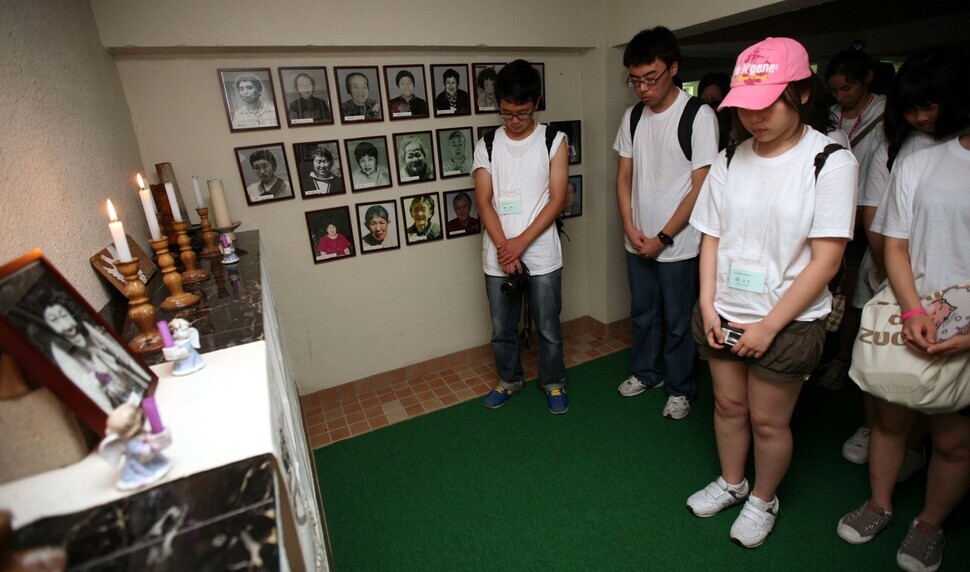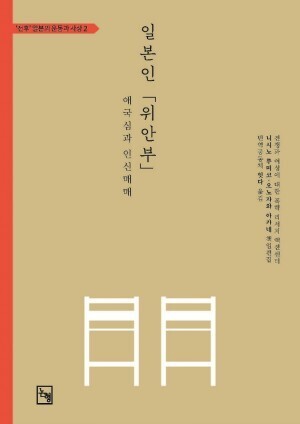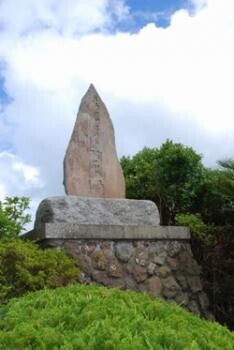hankyoreh
Links to other country sites 다른 나라 사이트 링크
[Book review] “Japanese Comfort Women: Patriotism and Sex Trafficking” remembers Japanese “comfort women”


“Three women from the same village had come to Davao, in the Philippines. Aged 25, 19, and 22, the three women spoke the Kansai dialect. The women had responded to an advertisement for ‘special workers in the south,’ but when they finally arrived in the Philippines, they learned they would be working as comfort women.”
Just as the book’s title says, “Japanese Comfort Women” deals with the existence of comfort women from Japan. While it’s now widely known that Japan forcibly mobilized women from colonies such as Korea, China, Taiwan and the Philippines as comfort women, fewer people are aware that Japan perpetrated the same crimes against its own citizens.
That’s only natural. Given these women’s Japanese citizenship and the fact that most of them had already been prostitutes, they didn’t voluntarily disclose their past as comfort women. Furthermore, Japanese society was anxious to conceal its war crimes and thus not eager to publicize the issue. Thus far, only a handful of Japanese women have admitted that they’d been comfort women, including one who goes by the pen name of Suzuko Shirota.
But that doesn’t erase the fact of their victimization. The team of researchers at the Violence Against Women in War Research Action Center who put together this book spent three years studying a wide range of materials, including documents from the Japanese military and Home Ministry, the memoirs of Japanese soldiers, magazines and works of nonfiction, at last bringing the existence of these women to the world’s attention.
The Japanese comfort women were similar to the Korean comfort women in some respects and different in others. They were both subject to a “mechanism of oppression” in which they were mobilized by brokers under orders from the state. But their experience of victimization was considerably different because Koreans were from a colony and Japanese were from the metropole.
“Shortly after the outbreak of the war with China, the Japanese military and the Home Ministry ordered the conscription of a large number of Japanese barmaids and other women to be ‘comfort women,’” states a Japanese police agency document quoted in the book.

There was rampant fraud and sex trafficking in the mobilization of the Japanese comfort women, another similarity with what happened to the Koreans. Acting on orders from the state, brokers posted false advertisements for “special workers” or “special nurses.” That’s reminiscent of the Korean women who were taken to comfort stations under false pretenses, having been told they would work as nurses or at textile factories in China.
But there are also clear distinctions between the Japanese and Korean comfort women. Some of the Japanese women were persuaded to go to the comfort stations by the idea that they’d be serving their country by encouraging soldiers and by the promise that they’d be enshrined at Yasukuni if they perished in the war. The writers said that “the intense alienation suffered by women in Japanese society was exploited for the purpose of wartime nationalism.”
At the comfort stations, Japanese women were “elites” relative to Koreans and Chinese, receiving better treatment and pay. According to some analysts, that instilled an “imperial attitude” that “prevented them from perceiving their victimhood and the discrimination and sexism they suffered.”
Another distinction was that, when recruiting Japanese for the comfort stations, Japan focused on women who had worked in brothels out of concern about the potential effect on soldiers’ morale if their family members became comfort women in what they had believed was a “holy war.” But when recruiting Koreans, Japan focused on sexually inexperienced minors so as to “protect” Japanese soldiers from venereal diseases.
As a Korean, encountering the existence of these Japanese comfort women — many of whom were prostitutes, women who were both subjects and victims of the aggressor state — evoked a complicated mixture of emotions. But after finishing the book, no doubt remained about the “consistency” of Japan’s brutal behavior.
By Choi Yoon-ah, staff reporter
Please direct comments or questions to [english@hani.co.kr]
Editorial・opinion
![[Column] Season 2 of special prosecutor probe may be coming to Korea soon [Column] Season 2 of special prosecutor probe may be coming to Korea soon](https://flexible.img.hani.co.kr/flexible/normal/500/300/imgdb/original/2024/0426/3317141030699447.jpg) [Column] Season 2 of special prosecutor probe may be coming to Korea soon
[Column] Season 2 of special prosecutor probe may be coming to Korea soon![[Column] Park Geun-hye déjà vu in Yoon Suk-yeol [Column] Park Geun-hye déjà vu in Yoon Suk-yeol](https://flexible.img.hani.co.kr/flexible/normal/500/300/imgdb/original/2024/0424/651713945113788.jpg) [Column] Park Geun-hye déjà vu in Yoon Suk-yeol
[Column] Park Geun-hye déjà vu in Yoon Suk-yeol- [Editorial] New weight of N. Korea’s nuclear threats makes dialogue all the more urgent
- [Guest essay] The real reason Korea’s new right wants to dub Rhee a founding father
- [Column] ‘Choson’: Is it time we start referring to N. Korea in its own terms?
- [Editorial] Japan’s rewriting of history with Korea has gone too far
- [Column] The president’s questionable capacity for dialogue
- [Column] Are chaebol firms just pizza pies for families to divvy up as they please?
- [Column] Has Korea, too, crossed the Rubicon on China?
- [Correspondent’s column] In Japan’s alliance with US, echoes of its past alliances with UK
Most viewed articles
- 1After election rout, Yoon’s left with 3 choices for dealing with the opposition
- 2AI is catching up with humans at a ‘shocking’ rate
- 3Noting shared ‘values,’ Korea hints at passport-free travel with Japan
- 4Why Kim Jong-un is scrapping the term ‘Day of the Sun’ and toning down fanfare for predecessors
- 5Two factors that’ll decide if Korea’s economy keeps on its upward trend
- 6South Korea officially an aged society just 17 years after becoming aging society
- 7Korea’s 1.3% growth in Q1 signals ‘textbook’ return to growth, says government
- 8Is Japan about to snatch control of Line messenger from Korea’s Naver?
- 91 in 5 unwed Korean women want child-free life, study shows
- 10[Reportage] On US campuses, student risk arrest as they call for divestment from Israel